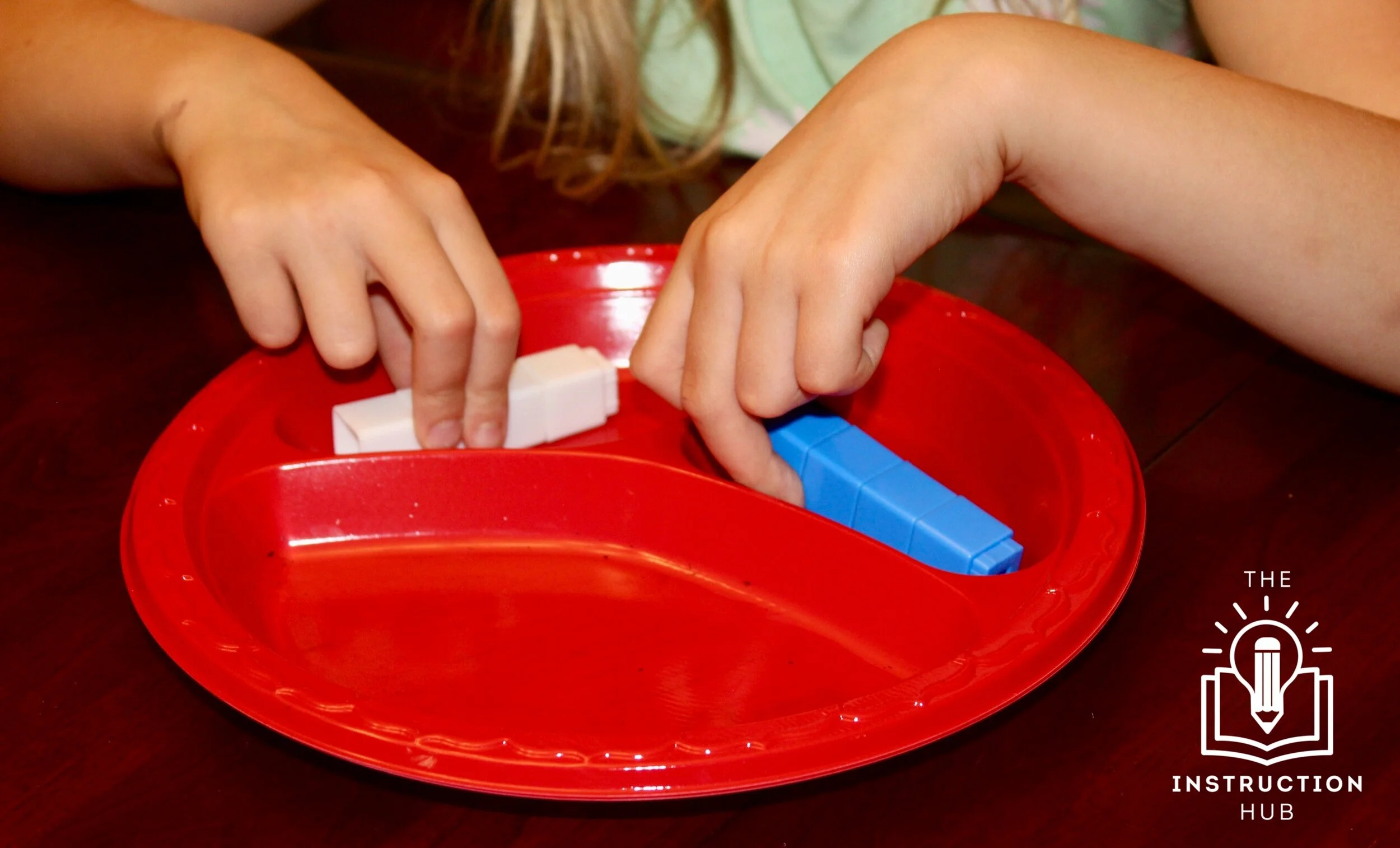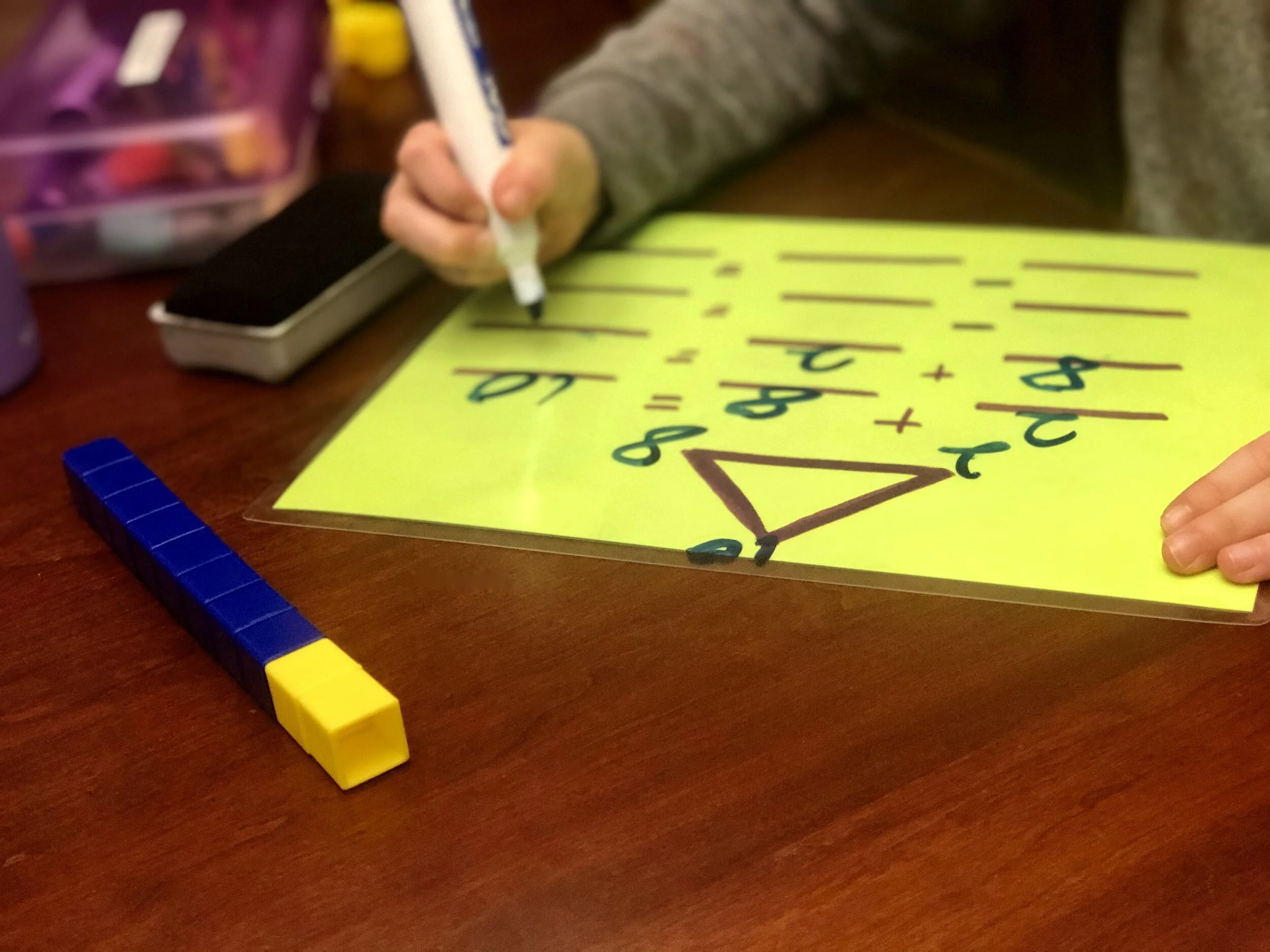Math is a 4 Letter Word!
If you are a literacy specialist or teacher, do not keep scrolling! You do not get off that easy!
“I am not good at math!” As my precious grandfather would have said, “hold your horses!” (That is mountain talk for now wait just a minute). Is it that you are not good at math or maybe you just need a different approach or different tools? Now don’t get me wrong, I am not a math specialist. In fact, I am one of those literacy specialists I mentioned. When they put letters in with numbers, I. Am. Out. So why are you reading this blog then, right? Well, I felt like I wanted to write on this topic because
I think it is important.
I have had the opportunity to train under some excellent multisensory math specialists.
I have learned a few tips and lessons along the way that I would like to share.
Let’s Talk About Manipulatives:
There are a few things that can happen with manipulatives.
There are so many in the ‘resource’ it is too overwhelming to even open or too confusing to use.
They are too expensive or come with too many bells and whistles.
You are a super organized person who does not want to get them out of order.
You take a more ‘free spirit’ approach with them and lose a few (or half) of them.
You need a way to use them in a lesson without them creeping into the entire workspace.
You are like me and vary between all of the above.
In teaching, whether as a homeschool parent or in a classroom, you want to use manipulatives. Students need to feel, build, and see it first. This is so important for early learners and laying the foundation for understanding. It is also important for me. What I mean by that is, when I am teaching it helps me organize my thoughts and guides me to use concise language. In an attempt to explain things, I tend to be garrulous….I am sure you couldn’t tell that. I find that is not as confusing when I have a visual to walk my student through a concept. It is so valuable to move from simple to complex, and you can get to complex a lot earlier than you might think. So use the manipulatives! I have a video of moving simple to complex from manipulative to workbook with the concept of more/less. You can check that out by clicking here. Here are some tips I have for manipulatives:
They do not have to be expensive. Everyday items make the best learning tools. Think beans, cubes, ice cube trays, egg cartons, divided plastic plates….and the list could go on. I have this tendency to keep all the things because my attentionally-challenged-yet-creative side sees it as a potential teaching tool.
Find an organizational system that fits your preferences. Give yourself the gift of time to organize them in a way you can find them. Not necessarily by “topic” but by object so that you can pull them easily for use.
Just because Amazon has them on sale, does not mean you need three extra sets (note to self*). When I have too many, my storage runs thin and I get aggravated thus don’t know where to start to use them.
Less is more.
Laminate for reuse and look at it through the lens of how can I use it in more than one way.
Check out my Instagram and Facebook page for weekly posts on how I use manipulatives for different topics.
Let’s Talk About The Language of Math:
Ok this is the part where the “I don’t teach math” won’t work. We all have a responsibility to teach the words and language that go with math. How can we expect our kiddos to know how to solve the word problem when they can’t read or understand the word problem? The same with directions that involve math words they do not know or can not read. We can start teaching vocabulary to our earliest learners so they at least have exposures for when they get to algebra or geometry. I had a highschool math teacher who took complex concepts and vocabulary and put it in language that helped me move from basic to a deeper understanding. It made a difference! Here are some tips I have learned:
Teach morphology (the study of the meaningful parts of our language-prefixes, roots, suffixes). Early learners may not be ready for the sophisticated term ‘morpheme’, but we can teach them as ‘word parts.’ For example, when I teach fractions (even to second graders), I teach the ‘word part’ -fract- to break. I begin with discussion on what a fracture is and include pictures of a broken bone. I talk about a fragment and provide a picture of broken glass. We discuss how each of these words means to break. I then lead then into seeing -fract- in these words and in fraction. I talk about how in a fraction we are breaking a whole into parts. When I teach addition to early learners, I also introduce the term commutative. Will they remember the exact word, probably not but hopefully the exposure will give them one of the repetitions they need to be ready for it in later grades. We discuss how the prefix com- means with or together. I ask in a community you are “with or together” with a group. The same with addition. You can group “together” the numbers in any order. You can see a brief video of that here.
You need to link the language to the manipulative, the picture, and then the concept. As the student grows in their understanding of a concept they can link the term to each step of their learning.
Let’s Talk About Pacing:
There are times that we cannot help the fact that there are certain requirements for where we should be in a scope and sequence at a certain time in the year. I have been there, and you have to do your best to make it work. However, if you are able and if you have the luxury of time TAKE IT! It is important to see that a student must have numeracy skills before they are ready to grasp more complex skills. If you do not take the time to establish those early skills, you will take the time to fill in the gaps later. In my opinion, you might as well do it on the frontend. Frequently go back and review and reinforce giving the student time to see, build, use, and apply the skills. Review and reinforcement should be given a larger portion of your lesson time allotments.
I am a wordy person, so I could ramble on for a while. I will stop here for now. Be sure to check out my other posts, my Youtube, Pinterest, Instagram, and Facebook pages for other ideas.
This information is the intellectual property of ©2021 The Instruction Hub. Do not use or repurpose without expressed permission from The Instruction Hub. Please give The Instruction Hub an attribution if you choose to use, reference, or quote/paraphrase copyrighted materials. This includes but is not limited to blogs, social media, and resources.





